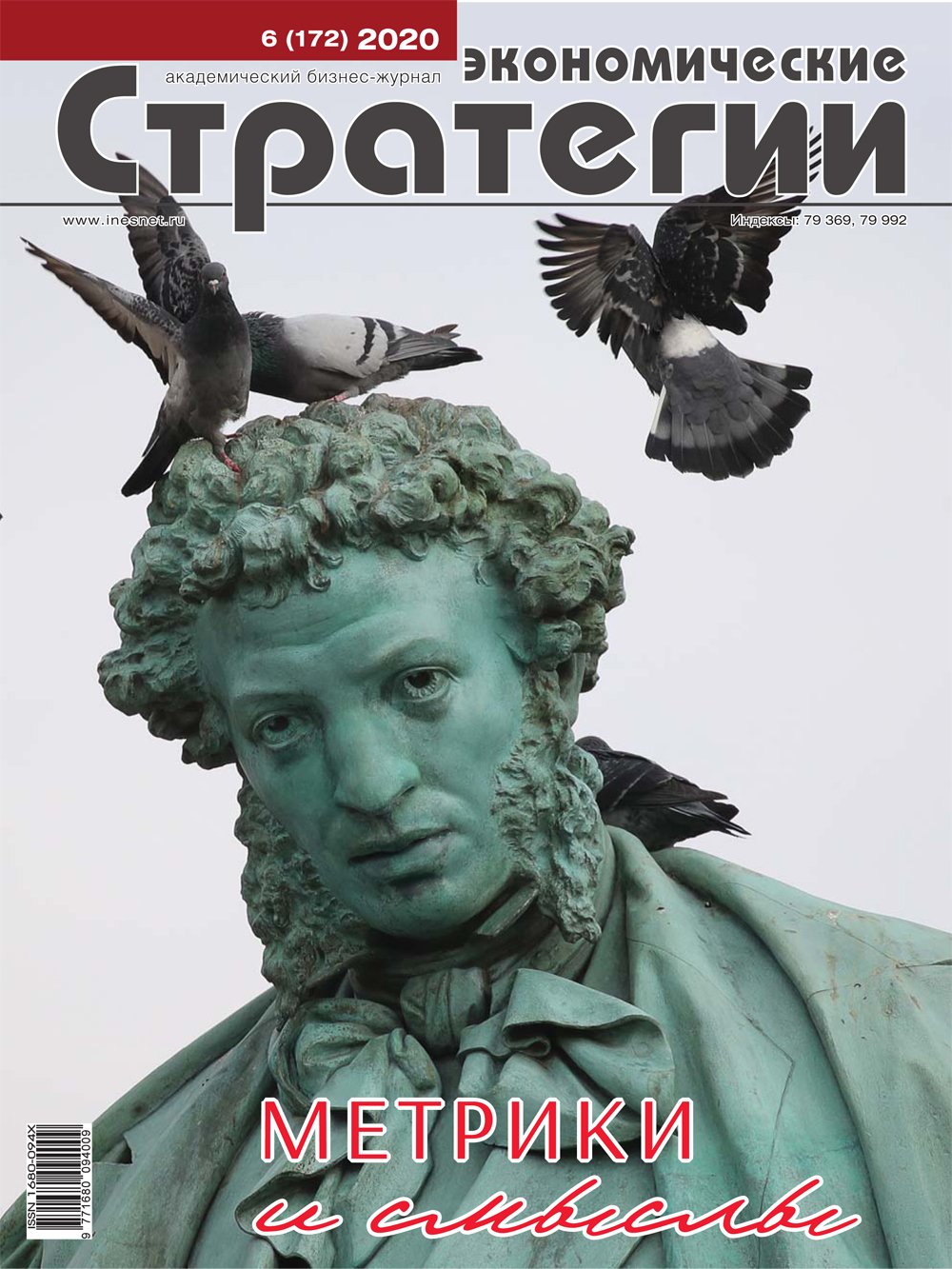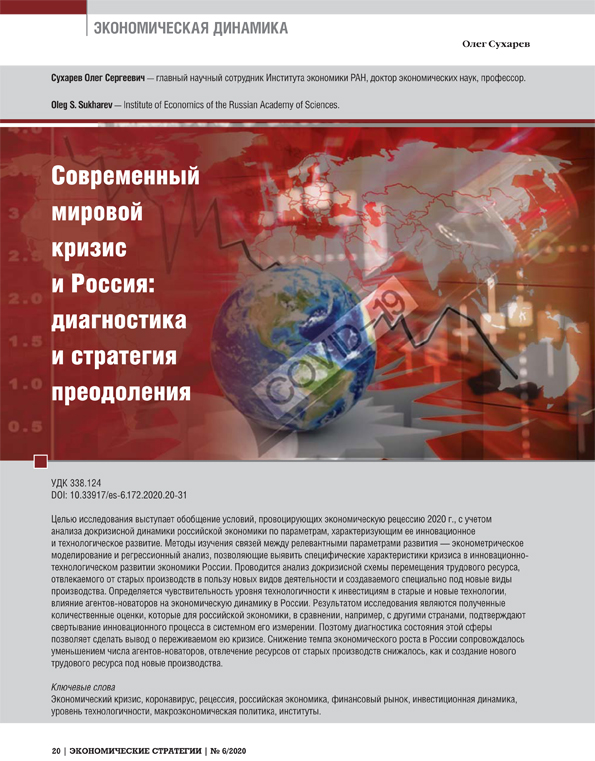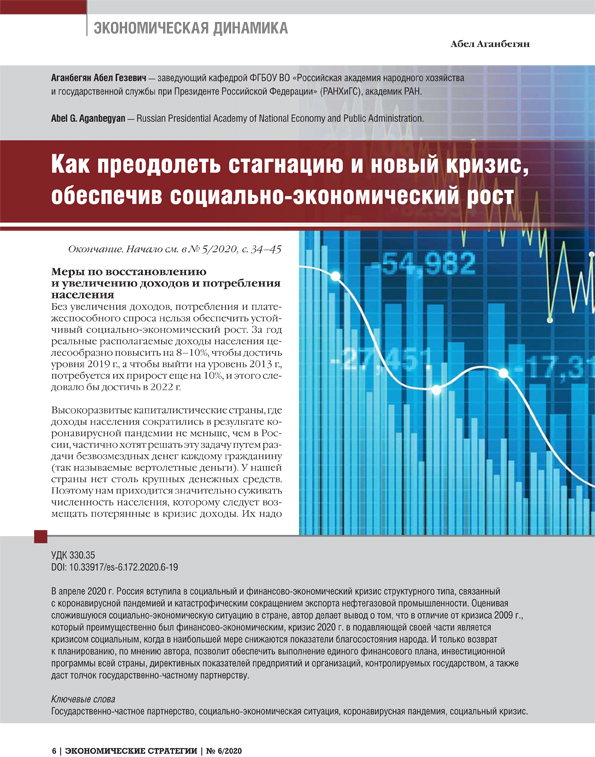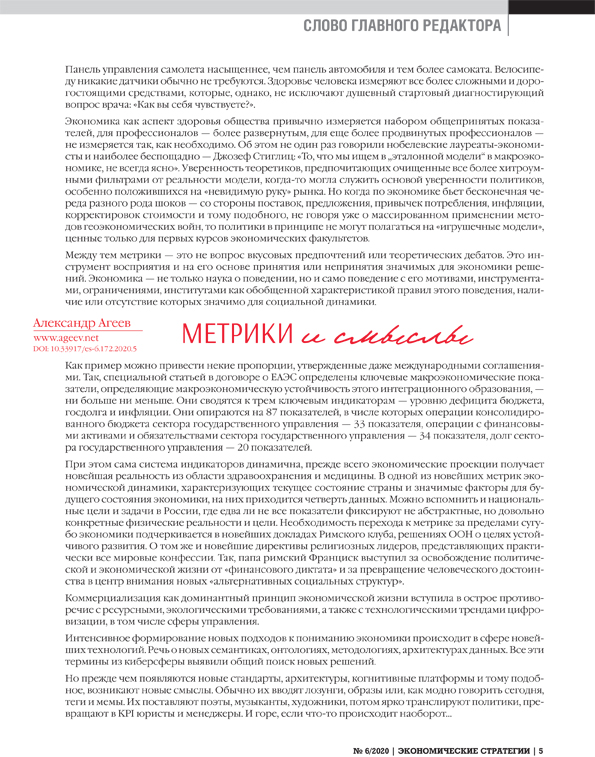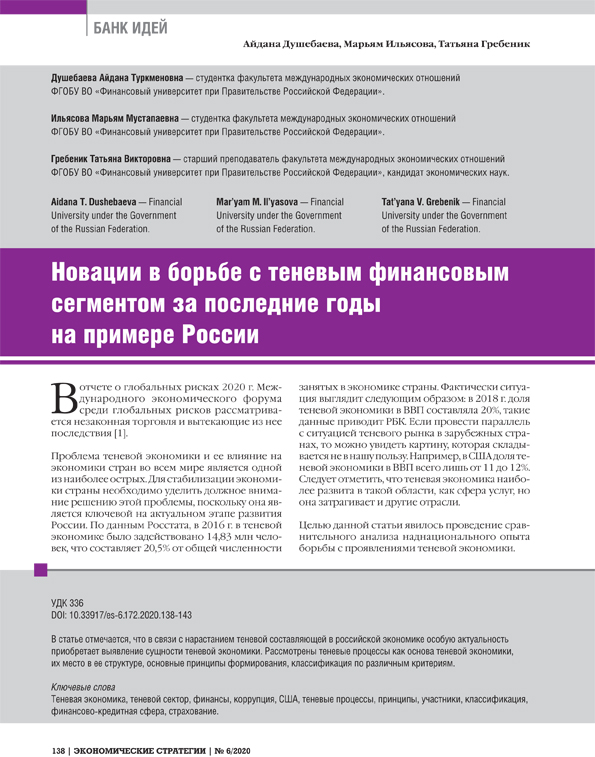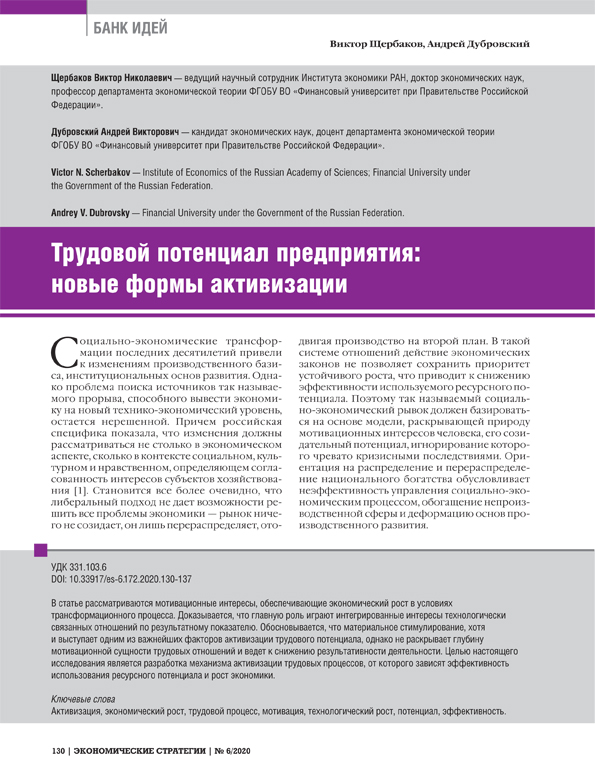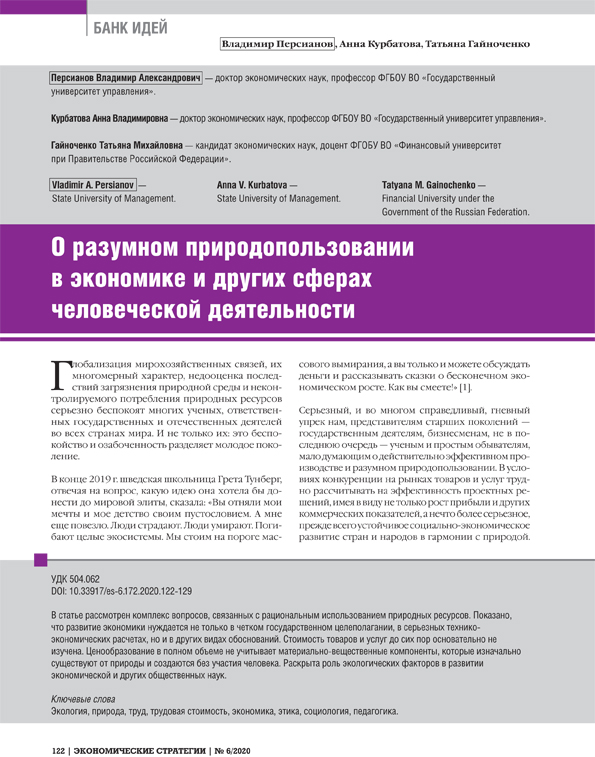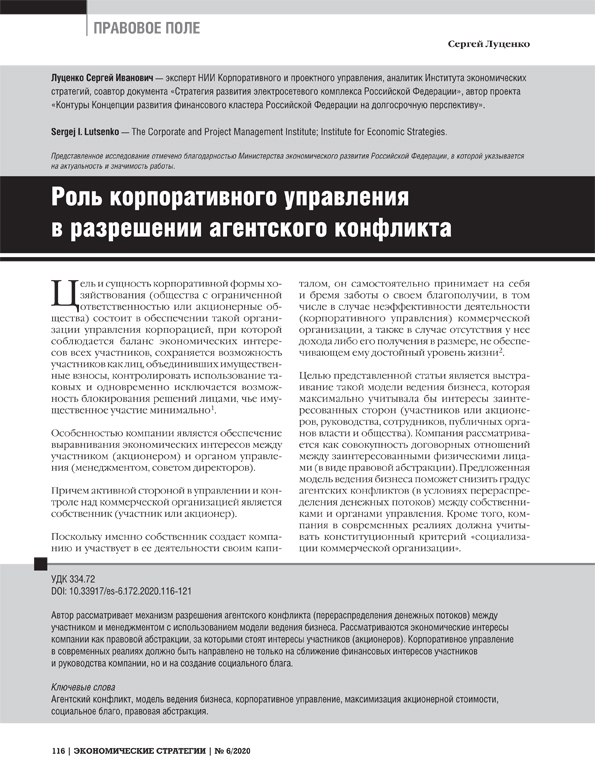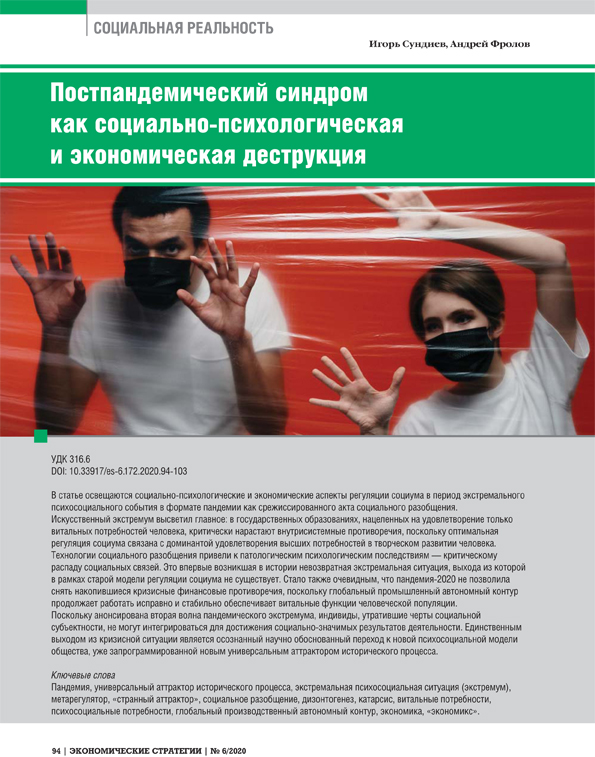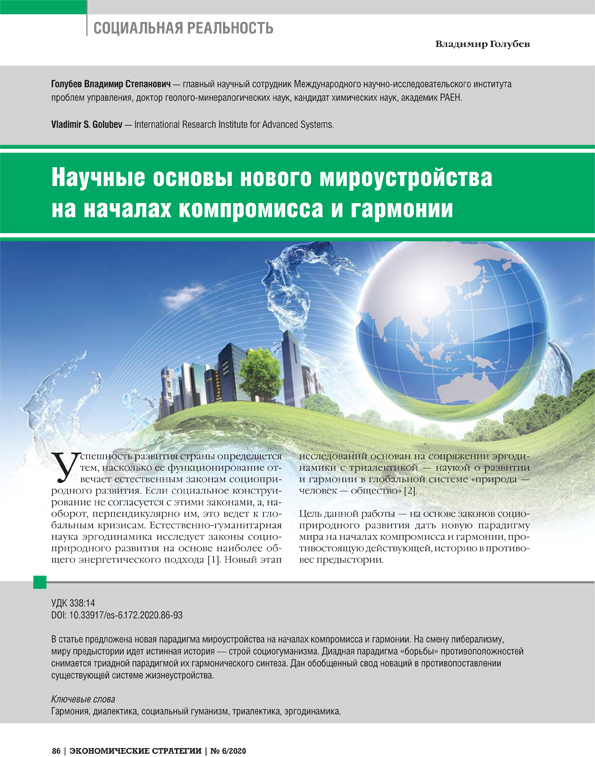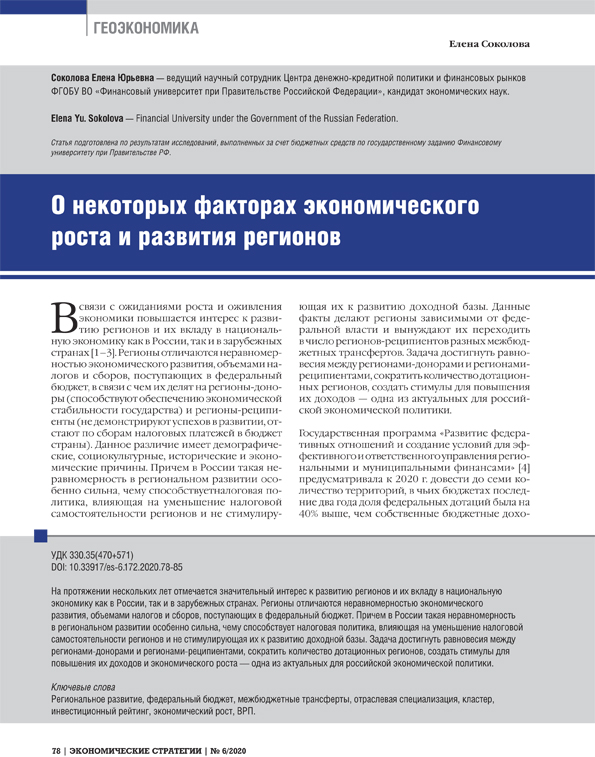Modern World Crisis and Russia: Diagnostics and Status of Overcoming
DOI: 10.33917/es-6.172.2020.20-31
The purpose of the study is to generalize the conditions that provoke the economic recession of 2020, taking into account the analysis of the pre-crisis dynamics of the Russian economy according to the parameters characterizing its innovative and technological development. The method of studying the relationships between the relevant development parameters is econometric modeling and regression analysis, which allow to identify the specific characteristics of the crisis in the innovative and technological development of the Russian economy. The analysis of the pre-crisis pattern of the movement of labor resources distracted from old industries in favor of new activities, and created specifically for new types of production. The sensitivity of the level of manufacturability to investments in old and new technologies, the influence of innovative agents on the economic dynamics in Russia are determined. The result of the study is the quantitative estimates obtained, which for the Russian economy, in comparison, for example, with other countries confirm the folding of the innovation process in its systemic dimension. Therefore, the diagnosis of the state of this sphere gives a conclusion about its crisis state. The decrease in the rate of economic growth in Russia was accompanied by a decrease in the number of innovative agents, the diversion of resources from old industries decreased, as did the creation of a new labor resource for new industries.


